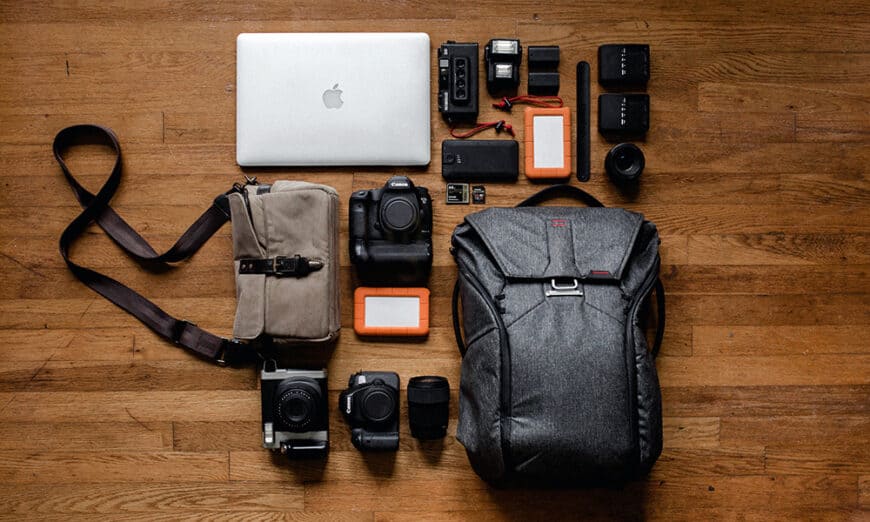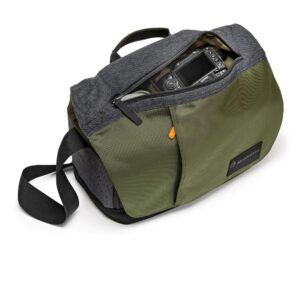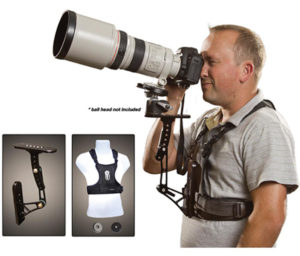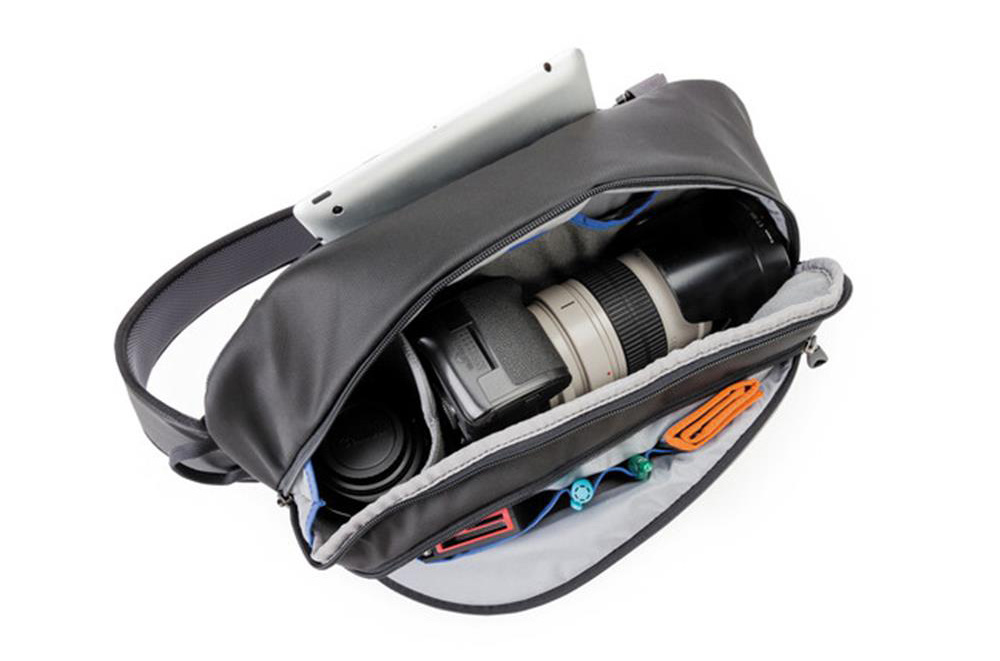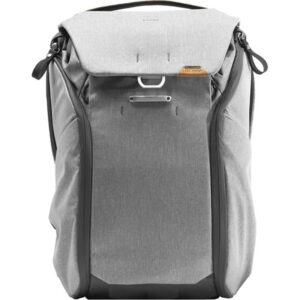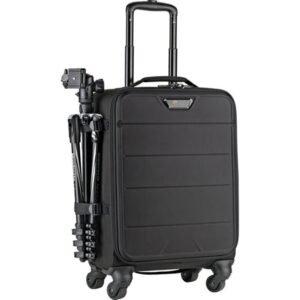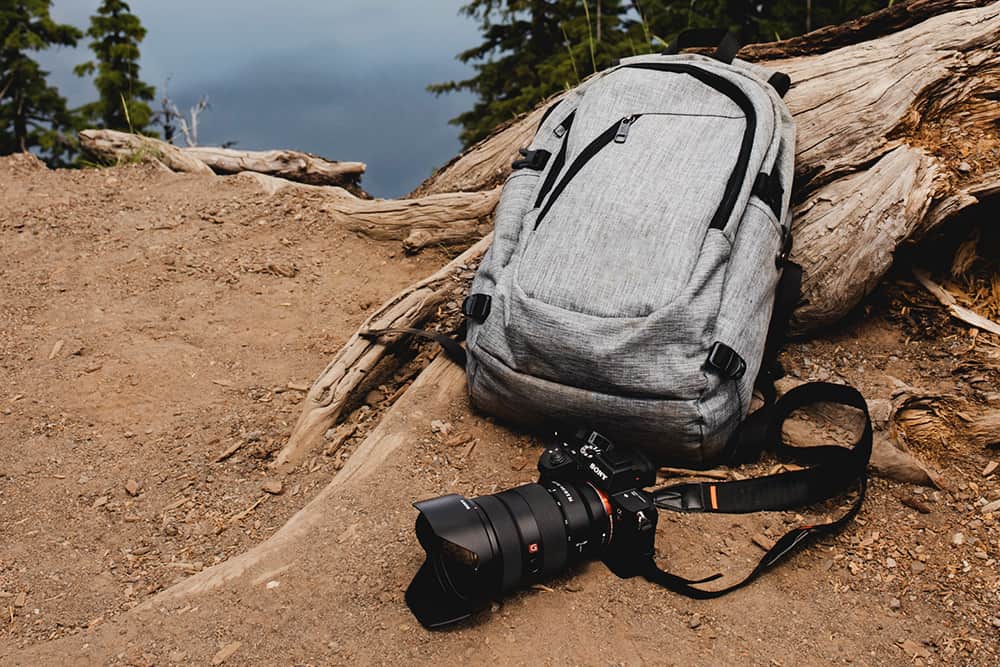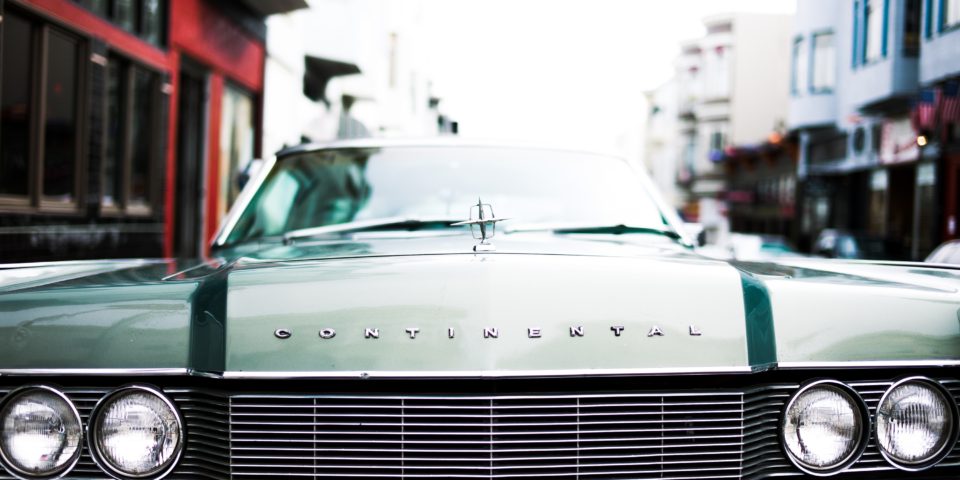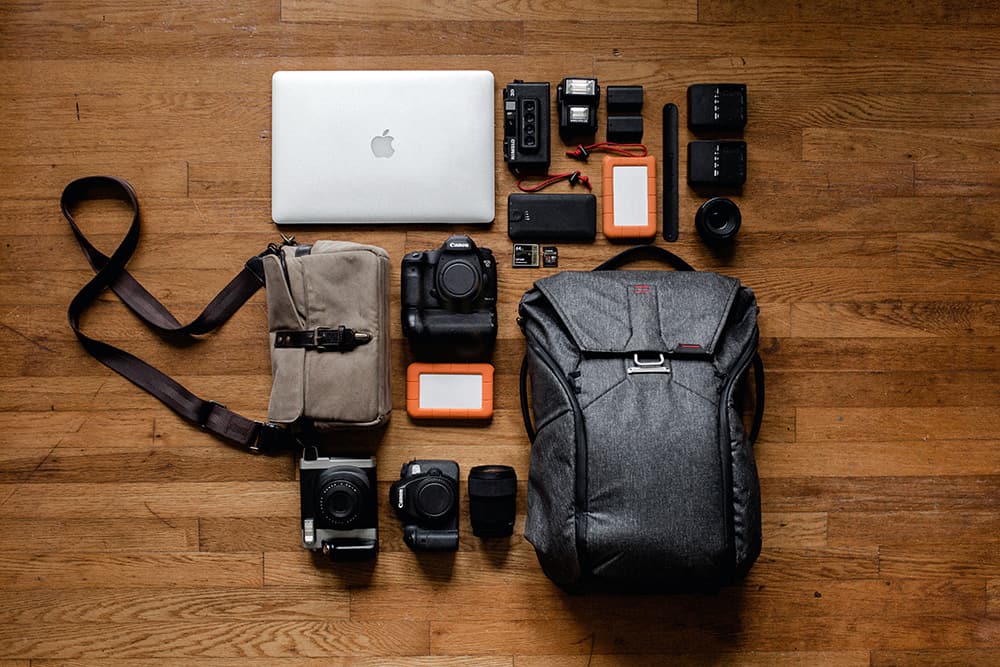
The first step in protecting your camera and other photo and video gear is by storing it somewhere safe. This includes a safe place to rest but also somewhere it will be safe while carrying it on-the-go. Photography or camera bags, which include styles such as backpacks, pouches, hard cases, rolling bags, and more, make it easier for transporting your equipment from place to place.
Now you might be wondering, why couldn’t I just use a regular backpack or bag? These camera bags are made specifically for just that, cameras & related gear! They’re more durable than your traditional bags, and include special pockets and compartments to hold different types of gear (camera, lens, accessories, laptop, as examples).
They are also designed to be much more comfortable for you to carry, with extra padding on the back and padding inside the bag to hold you gear. Some even come with special slots on the sides for easy access.
Choosing the right bag typically comes down to your preferences, but with all the options out there, it can be hard to choose just one. We’ve put together a list of suggestions that can help making sure that your investments (gear) are well protected.
Carrying Mode
There are a number of mechanisms that allow you to carry a camera bag. Each has its own pros and cons. Before we delve too deep, let’s spend a bit of time thinking about how we want to carry the bag.
Camera Shoulder Bag
This is pretty much the classic bag. A strap goes over your shoulder, and if the strap has been made long enough, you may be able to hang it so the strap goes across your body.
Figure 1: Manfrotto Street Messenger Bag
Waist Kit, Holster, Belt Clip
This is a bag and potentially a lens holder that goes on your belt or on a dedicated belt.
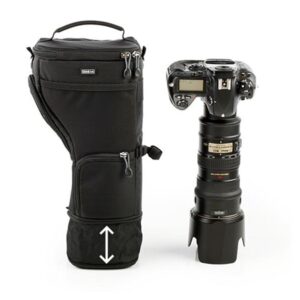
Figure 2: Think Tank Holster System
Camera Harness System
This is a harness system with a chest plate and a camera receiver to hold a fitting that you attach to your camera.
Figure 3: Cotton Carrier Chest Mount with Long Lens Holder
Photography Sling Bag
This is a cross between a shoulder bag and a backpack, having only one strap system, that allows the bag to be on your back but quickly swivelled around to the front for access.
Figure 4: Think Tank Photo TurnStyle 20 V2 Sling
Backpack for Photographers
A backpack is exactly like what it sounds like. A larger system with lots of space, moveable dividers, and attachment points and straps for extra gear.
Figure 5: Peak Design Everyday Backpack
A bag can haul almost everything, but many overload it to the point of pain. If you think you might one of those folks, you might want to consider looking into a roller bag, which can save you from the back pain!
Figure 6: Lowepro PhotoStream 30L Spinner
Comparison
| Carrying Mode | Pros | Cons |
| Camera Shoulder Bag |
|
|
| Waist Kit, Holster, Belt Clip |
|
|
| Camera Harness System |
|
|
| Photography Sling Bag |
|
|
| Backpack for Photographers |
|
|
Carrying Mode Summary
In the spirit of full disclosure, I have bought and still have at least one of each of these modes of carry, and in some cases I have units in different capacity ranges. After several decades of being a photographer, I find that a sling bag is the best option for a travelling photographer who is not travelling solely for the purpose of photography. If your trip is solely to photograph, a backpack tends to be the way to go.
Colours and Branding
You can’t blame bag makers for wanting people to notice their products. Most of them put big colourful logos or tags on their bags. The very popular Lowepro lineup is internationally recognized by their logo.
In terms of bag colour and designs & branding, it comes down to personal preference, but also, factors like travelling will also help you determine whether a certain colour is good or not.
For example, black is the least visible of the colours (doesn’t stand out as much), and you also wouldn’t have to worry much about it getting dirt stains if you were to put it down on the ground in a unpaved setting.
Bright logos also attract thieves’ and pick-pocketers’ attention particularly if you are travelling, as they tell all observers that you have a camera bag, that you bought a name brand one, and that there is a high probability that it contains expensive gear. Some makers have gone to bright-coloured bags to try to disguise their branding by diverting from the very common black.
Because I travel to different locations with my gear, for safety reasons, my practice is to never use anything with a visible brand on it. This includes both bags and camera straps. I personally use bags from Think Tank Photo because they are designed by professional photographers who understand that waving a logo for costly gear is a mistake. If you already have a bag with a big logo and want to cover it up, black gaffer tape is a good way to negate it.

Construction Materials
Fabric
The best-known construction material for top-end bags is DuPont Cordura nylon in a high Denier count. Bags made of ripstop nylon are inexpensive but are easily slashed. Ripstop does not mean the material will not tear, it means a tear won’t widen on its own. In the old days, a heavy canvas was popular among photojournalists such as the bag made famous by Photojournalist Jim Domke. I still have mine from the late seventies and it’s still in great shape (although it’s more a history piece for me now).
Hard Shell
Hard-shell cases provide great protection, but carrying them is not fun nor easy. Leather bags can last a long time, but a nice leather bag is in and of itself a very popular target for thieves. Vinyl is a very poor choice as is non-Cordura nylon. There are a great many Cordura clones in the marketplace. You can feel the difference between real Cordura and the fake stuff easily.
Straps
Most bags have some kind of straps. Look for straps made of military grade or seat belt grade webbing and ensure that the straps have usefully large gel pads. What feels good for five minutes in the camera store, could very well be carving into your skin after three hours.
Zippers
The best zippers come from YKK and you are looking for bi-directional, self-healing zips. YKK make a variety of quality levels and cheap bags use cheap zips, and I have even seen fake YKK zippers on some bags, labelled as YKK.
Buckles
Buckles are typically an advanced polymer, with those from Fastex being the best because they lock securely and do not fail in the heat or cold. If the plastic on the buckle feels overly hard, it may be a cheap clone that will not hold up over time.
Padding
Internal padding is of importance. The best padding is going to be closed cell foam sealed into a water repellent nylon. These have fallen out of favour as makers have gone to a cloth cover that Velcro or hook & loop fasteners will stick to anywhere. Big pads eat up space, so a smaller denser pad is better. Many bags offer the option of bright interiors which is an enormous win when you are trying to work in low light. Others have a grey coloured interior that is supposedly middle grey so you can use the bag interior to set white balance. There is no guarantee of colour fastness in material dyes or weaves though.
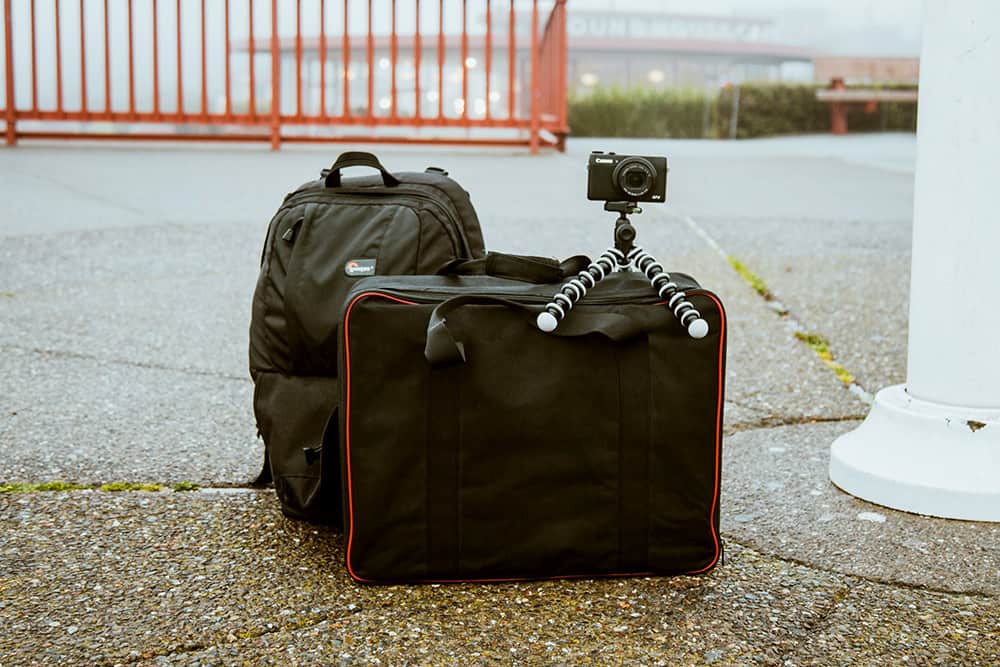
Bag Size
The best advice that can be offered in choosing a travel bag size is to go as small as is feasible. Plan out your working travel kit, including all the stuff that MUST be in the camera bag.
For example, while I have spent too much money on gear over the years, I have knocked my travel kit down to one pro body, a 28–300mm, an 11–24mm, a Profoto A1 Flash, a collapsible light shaper, a Platypod Max, and spare batteries and cards. I do not have everything with me that I could possibly need, but I am not exhausted at the end of the first day.
I usually take my gear on the plane or the train in a roller backpack and keep my day bag flat in my other luggage. That way if I need a longer lens or other tools, or a spare body, they are with me, but locked up at the hotel unless I need them. I also will stuff a travel tripod in my regular luggage.
Having a selection of inexpensive accessories is going to make it easier for you to make great images, and you don’t need a giant bag to carry it all, either. I find something as simple as Ziploc bags a great way to keep all my small accessories together.
Conclusions
As any law enforcement professional will tell you, tourist locations are crowded with pickpockets and thieves, so it pays to be on alert when you are travelling with expensive gear. Some folks interpret that to mean “Do not bring a camera”, but that is a personal choice. Some simple care in bag selection and staying conscious of your surroundings will go a long way.
There is a wide assortment of great quality camera bags that are durable and will last long to choose from. Ultimately only you can truly determine what the ‘best’ bag is for your preferences and needs!
If you have any questions, let us know in the comments section below.
What’s Next
